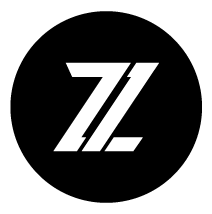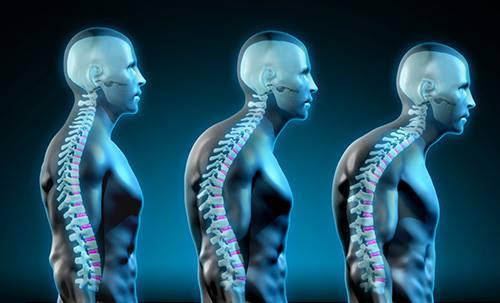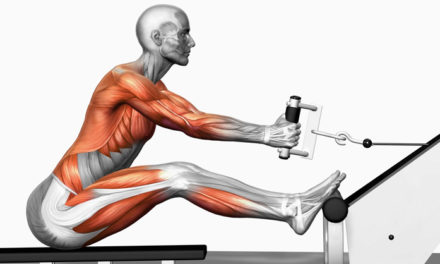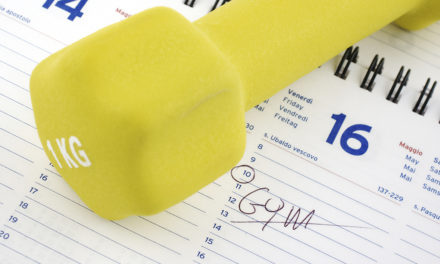Happy Thursday everyone and welcome back to the third segment in “How Computer Work Damages Your Body.”
In Part 1 we outlined how computer work negatively impacts your upper back, neck, shoulder, chest, and hip flexor muscles, your posture, and joint movement. In Part 2 we went over how to properly position your computer screen, mouse, keyboard, and chair to minimize these negative impacts. This week I’m going to outline a few myofascial release (basically massage) techniques, tools, and stretches for releasing tension throughout the upper back, neck, shoulders, chest, and hip flexors.
Upper Back and Neck.
If you Google, “myofascial release tools for the neck” you are going to find many different tools and gadgets. While I haven’t tried them all, I have tried many of the most popular ones and the tool I actually use most, by far, to massage my neck and my upper back is my own hands.
Why?
Because they are always right there (thank goodness) and extremely easy to use. (Never underestimate how often we humans will skip an activity because we have to get up and walk a whole ten feet to grab something.)
Because everyone’s body is different, everyone will develop particularly tight spots in different areas of the upper back and neck, but here are the areas that I have found are often the tightest and when worked on, produce the most relief.
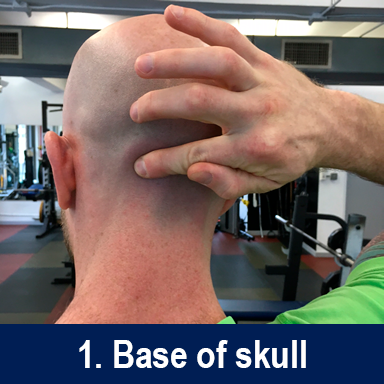

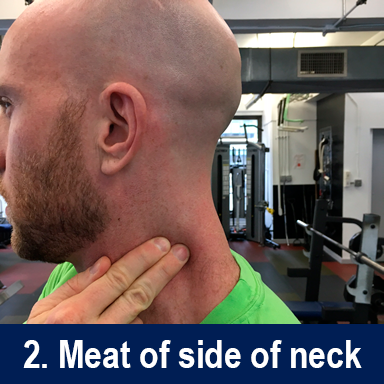
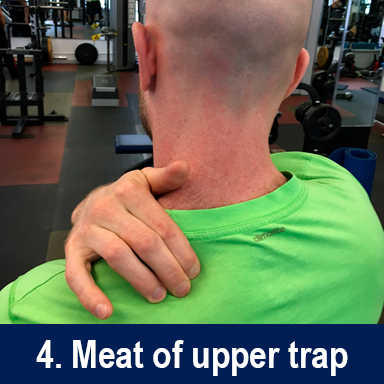
When you massage these points, do so with the same arm angle shown in the pictures above. Apply firm pressure to the most sensitive points you can find. A good rule of thumb is that the right amount of pressure will register about a 7-8.5 out of 10 on the discomfort scale. (A 9 is okay too. A 10 is unnecessary.)
In addition to my hands, I find using fixed, firm, protruding points, positioning my body accordingly, and leaning into these points to be a very effective way to massage my upper back and neck.
For instance, for the top of my upper traps I like to get into a squat rack and pull the squat bar down into the top of my traps while I stand up into it.
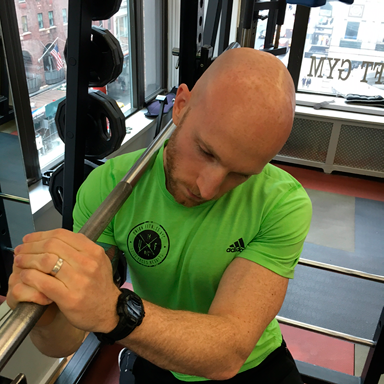
For the lower part of my upper back, I like to go up to the handle on the Roman Chair device and simply lean back against it.
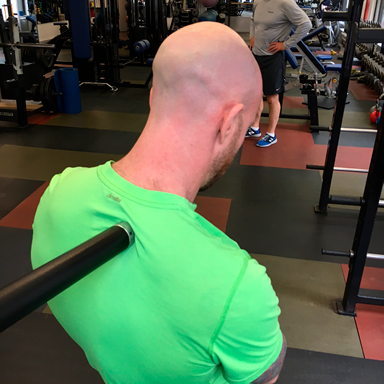
While there are a number of different stretches for the neck and upper back, the two that I find to be the easiest and most effective are as follows.
For the neck / upper trapezius, tuck your chin into your chest, tilt your head to the side slightly and then apply pressure to the back of your head, forcing your head in the direction you tilt it.
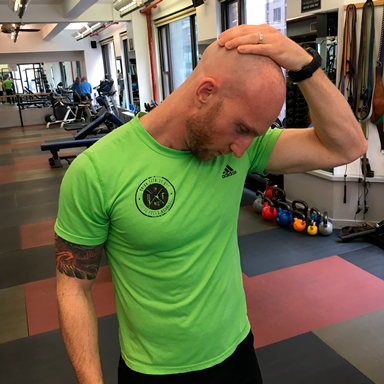
For your upper and mid back, grab ahold of an apparatus so that you arm is extended out in front of you (1) then turn to face your arm and drive your body away from the apparatus (2.) To increase the intensity of the stretch, brace yourself against the apparatus with your other arm and push (3.)



Shoulders and Chest
To massage your shoulders and chest, again I recommend your own hands or a firm, fixed, protruding apparatus. (Hands are best for the chest, a protruding apparatus is best for the shoulders.) Again, you’ll need to find your particularly tight spots, but here are the two areas I have found to normally be the tightest.
1. Outside upper pec.
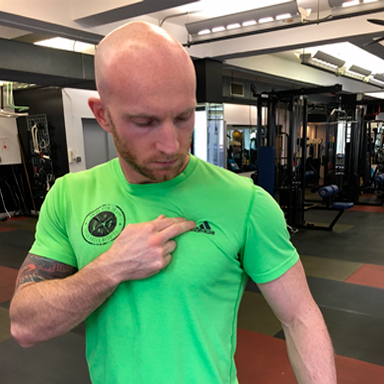
2. Middle anterior shoulder
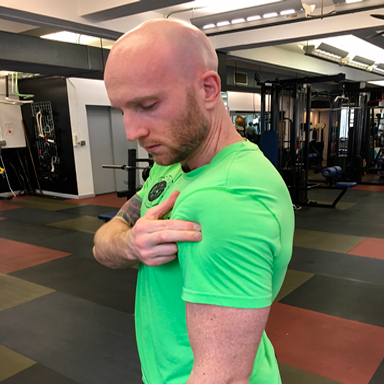
The stretch I have found to be the easiest and most effective for these two areas is the basic reverse chest fly stretch. To execute it, grip an apparatus so that your arm is straight out in front of you (1) then turn your body and your feet so you are facing away from your arm and drive your body forward. (2) You should feel a strong stretch throughout your chest and the front of your shoulder.
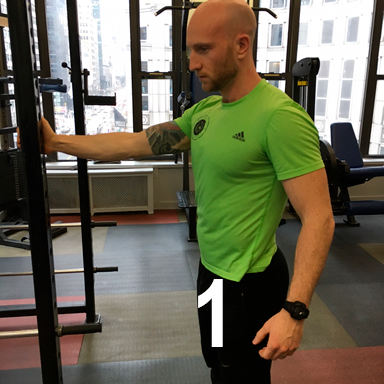
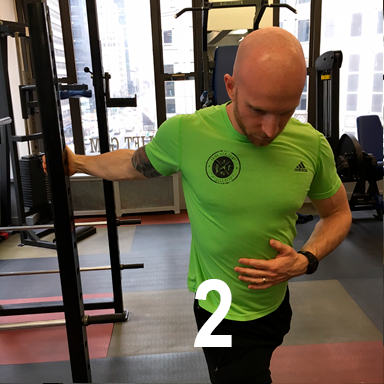
Hip Flexors
Candidly, massaging the hips is not easy and can be a pain in butt.
Why?
Because our hip flexors are not well positioned to be easily manipulated using our hands. As a result, to effectively massage your hip flexors you’re going to need to lie down on your stomach and position a tool in the crest of your hip.
Again, I’ve tried many different tools for this job and have found the best to be a softball or similarly sized and shaped device.
Once you are lying on your stomach, position your softball so that it is directly in the crest of the hip you want to massage (1) and bend your opposite knee to brace yourself. (2)
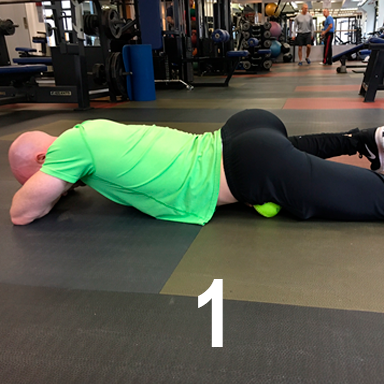

Then start to slowly lower more of your body weight onto the ball until you feel substantial pressure in the muscles in the front of your hip.
I won’t lie, this process can be a bit difficult and frustrating at first. You’ll need to play with the ball’s position and take some time to learn how to position your body on the ball to get the best release in your hip flexors.
But I promise, taking the time to learn how to do this is well worth it. You will be shocked how tight your hip flexors are and this method of myofascial release will provide you with an immediate release of tension.
To stretch your hip flexors, simply kneel on the ground, extend your leg back behind you, squeeze the butt muscle of your extended leg, and drive your hips forward.
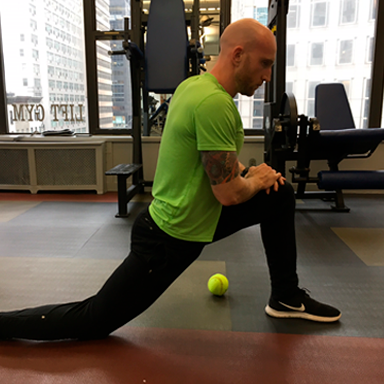
You will start to feel a strong stretch throughout the front of your hips (and probably your groin too) quite quickly.
To make the stretch even more effective, loop a workout band around something heavy like the leg of a table or desk, then put the band around the front of your extended leg and drive your hips forward.
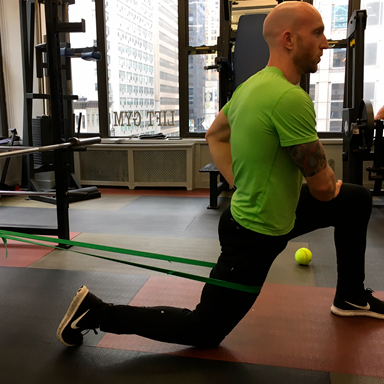
The band will help pull your femur (upper leg bone) backward in your hip socket (this is good) and help stretch your hip flexor muscles and groin even more.
Okay everyone, I hope you haven’t fallen asleep from boredom yet. I know these last three pieces were a bit much, but the negative impact of computer work on our posture, our joint health, and on our chronic pain is real and profound. I strongly urge you to make the necessary adjustments to your workstations and begin to implement these massage techniques and stretches into your weekly routines. I promise you will see and feel real benefits from doing so.
Until next week and to our health.
Zach
